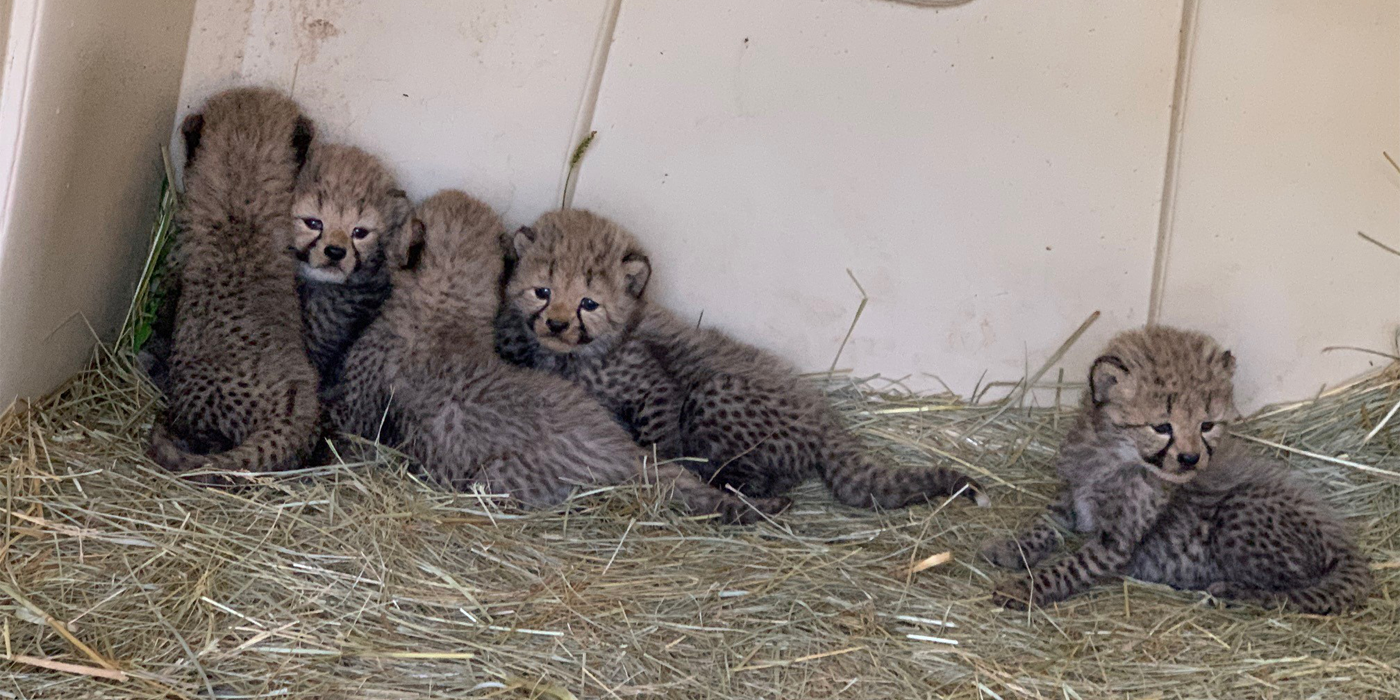#CheetahCubdate: New Cubs, New Den
As a species, cheetahs tend to be shy, introverted and a little skittish. And as loyal Cheetah Cub Cam viewers are probably aware, mother cheetahs sometimes move their cubs to a new location if they feel like that’s what they need to do. It’s all part of being a responsible cheetah mom.
We’re pleased to report that Echo and her five cubs are doing great… in an off-cam den. Last week, Echo moved her kits to a new den space in her habitat area, where they’ve been living since Sept. 29.
Fortunately, the 3-week-old cubs are thriving. Each of them—three males and two females—are active and playful, and they appear comfortable and healthy. And, they’re really mobile for their age! Echo is doing an excellent job. We’re hopeful they’ll be back in the webcam den soon.

There’s one more interesting thing I want to mention about this year’s cheetah cub litter: there are two potential sires!
Before she became pregnant, Echo bred with two male cheetahs. The father could either be Asante or Flash. Asante was born at SCBI in 2015 (and was also a sire of Ziad and Enzi, who were born to mom Amani in 2022.) Flash was born in April 2017 at Toronto Zoo in Canada and came to SCBI with his brothers in 2019. It’s common for female cheetahs in the wild to produce a litter from two different sires, and that may very well be the case here.

During the cubs’ first upcoming health exam, samples will be collected from each individual so scientists at our Center for Conservation Genomics can perform testing and help us determine who the sire is of each. Blood samples from Asante, Flash and Echo have already been collected and stored in our freezer until the analysis. Determining parentage is critical information for our studbook records and population management. By the end of the year, we’ll have figured out who fathered each of the five cubs. Until then, stay tuned!
Check back later on the Cheetah Cub Cam to see if our cheetah family will make an appearance, and catch up on previous #CheetahCubdates here.
Related Species:



